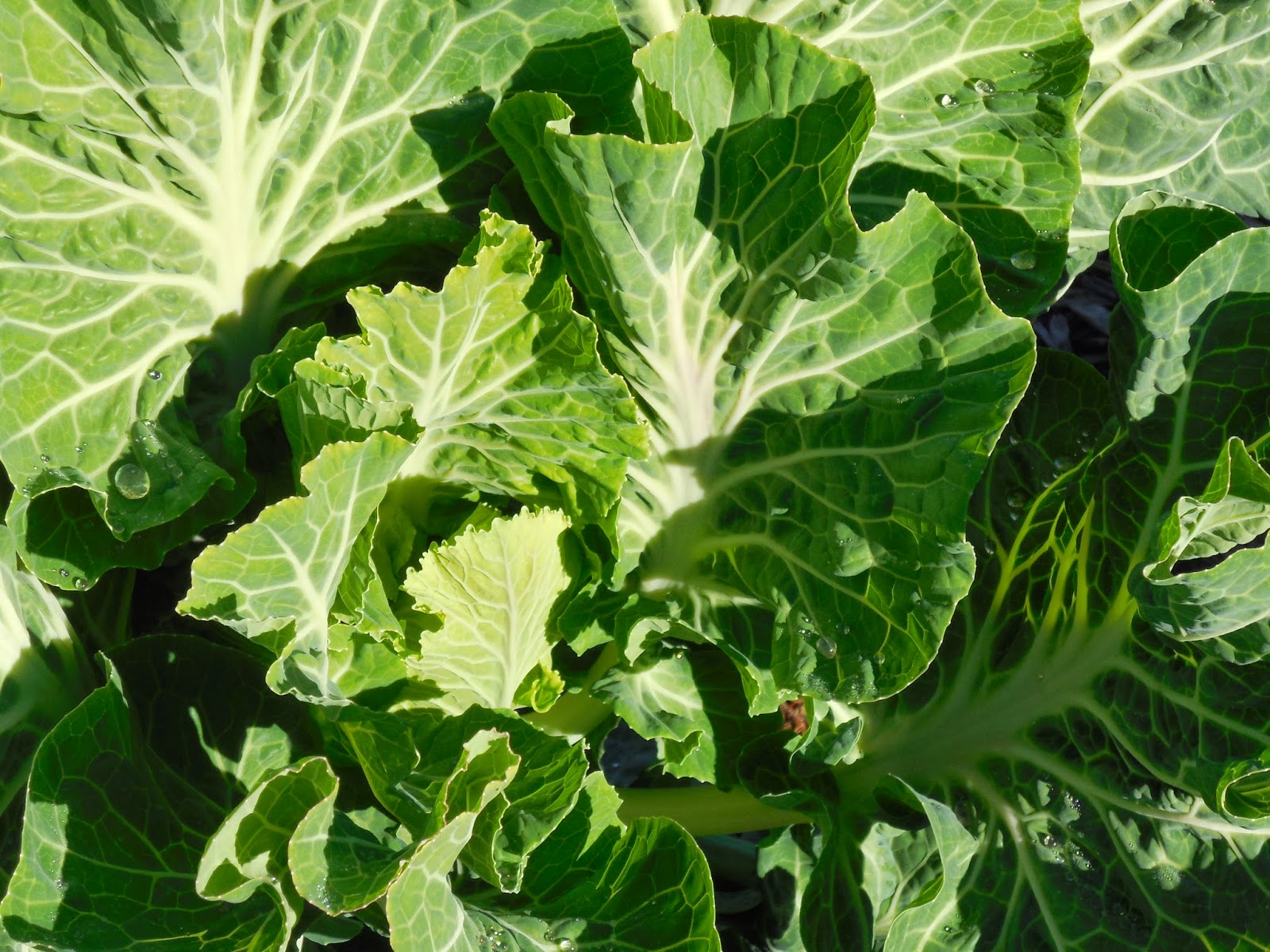We put in blueberries--three different varieties--and they are setting fruit already! We made a bed along the house of soil high in organic matter and therefore slightly acidic -- just the ticket for blueberries.
We will be transplanting several grape vines to new locations so our grape harvest will be low, so these berries will be a welcome alternative, along with the strawberries in the main garden.
Cauliflower doing well. We had a lot more before the gophers started in. Now we have fewer cauliflower and hopefully no gophers.
Next, we have cabbage. Our favorite way to eat cabbage? Sauerkraut. Yummy and so good for you. We have about eight heads of this white cabbage, called Stonehead. Especially bred for those of us with hard heads? Perhaps not. This is our first year growing this particular variety so we are especially looking forward to tasting the harvest and the kraut.
This red cabbage makes great sauerkraut too. It turns out hot pink. Fun to look at and to eat.
[See Making Sauerkraut.]
The Romaine lettuce patch has suffered at the paws and jaws of the gophers. The survivors are looking good and will be ready to eat sometime in the next week or so.
Another cauliflower. Just couldn't resist taking and sharing this picture. Morning dew still on the leaves.
White Perennial Tree Collards. If you like greens, this is the plant for you! It grows like a tree, keeps on growing year after year, and it tastes great. Our favorite way of eating this is sauteed with onions and garlic. Mmmm....
[We have cuttings for sale.]
Fava beans. Good to grow in the cooler days of spring.
Dinosaur or Lacinato Kale. Tender leaves, prolific, mild excellent flavor. Also called palm kale because it looks like a miniature palm tree as it grows--though you couldn't tell that from this photo, showing just the upper leaves. The "dinosaur" skin look of the leaves lend a hand in getting a youngster to try it.
Shelling peas. Hardly any of these make it out of the garden. Even though we have bountiful harvests, these are great to eat right out of the pod, right there in the garden!
Purple Perennial Tree Collards. These are a more robust and rougher version of the white tree collards. Deeper flavor, more antioxidants, hardier in the cold, and more drought tolerant once it is established.
[We have cuttings of these for sale.]
We harvested several Pennsylvania Dutch Crookneck Squash (one was about 20 lbs. [10kg]) and some Trombocino (or Zucchetta) Squash. Trombocino are interesting in that they grow very long (our longest was over three feet), have a small seed cavity at one end, taste similar to and look like zucchini when young, and look and taste like butternut squash (pictured; public domain photo) when mature. So we get summer and winter squash off the same vine.
Our Sulmtaler chickens (pictured) have started to lay again so we are getting ready to incubate a dozen or so eggs to hatch for meat chickens. This breed is Austrian, and at one time was prized in Europe.
We have a young brood of Buff Orpingtons that will begin laying in the next month or so. These will provide eggs for us with plenty to share.
Our mama Muscovy duck has also brought out 16 ducklings from her nest. We enjoy watching them grow. Better entertainment than anything on TV.
As always, we do not post updates here to show off, but rather to show you that if we can do it, so can you. We grow much of our own food on a suburban, quarter acre lot. Ask us how, we'd be glad to share what we know.















No comments:
Post a Comment